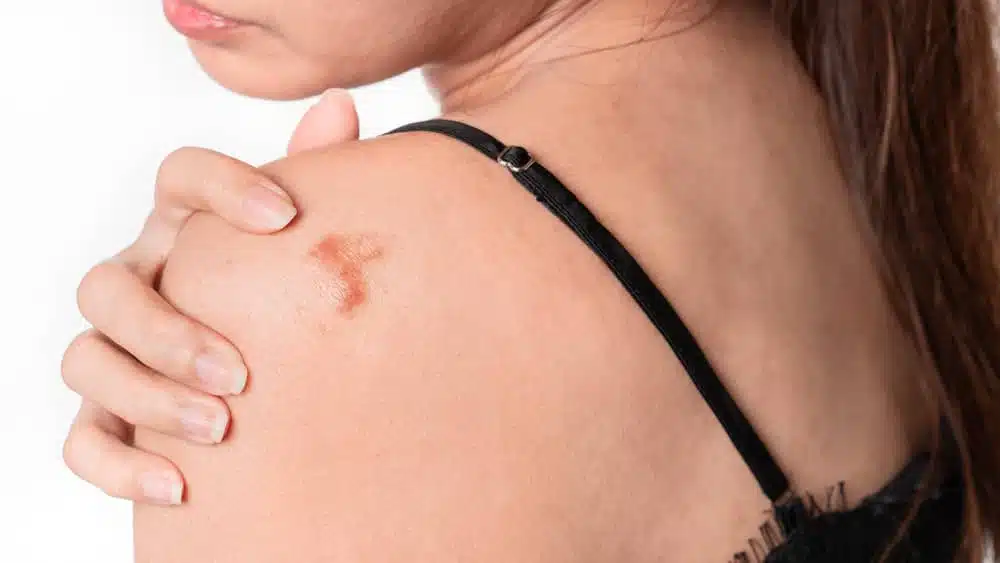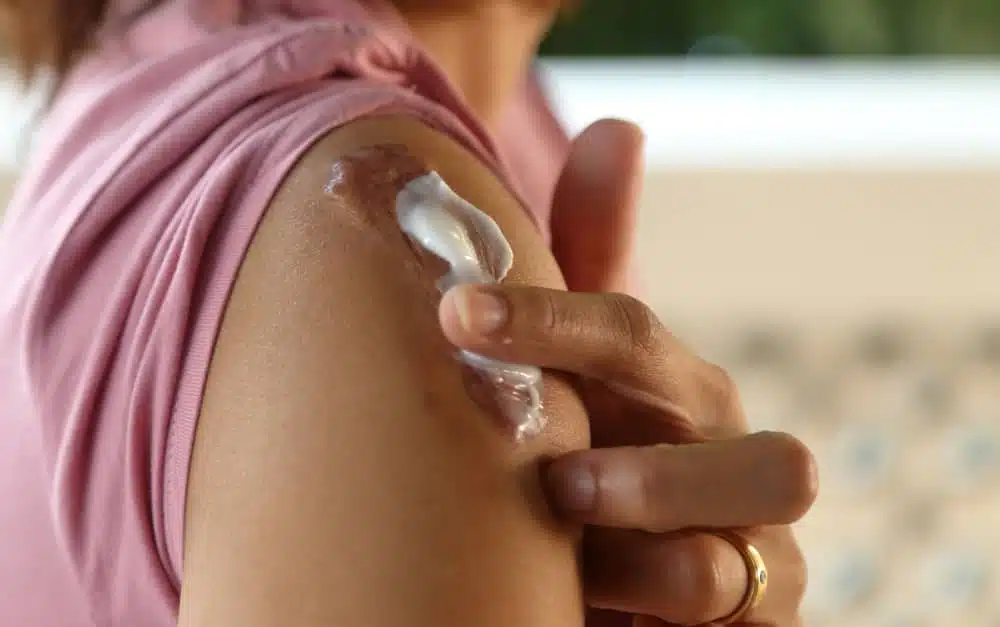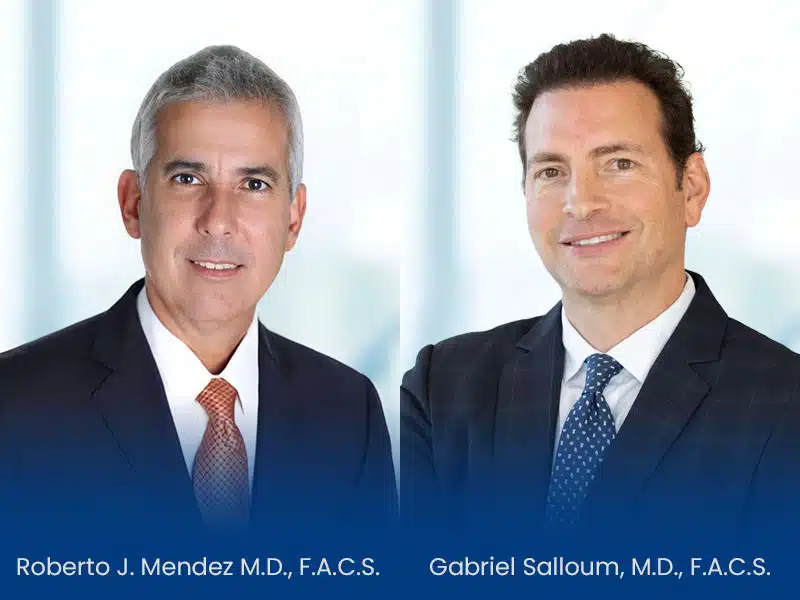Keloids are a type of hypertrophic scar that forms when the body overproduces collagen in response to an injury or trauma. They are characterized by raised, reddish-purple scars that can be itchy and painful. While keloid removal with surgery is often the most effective way to treat keloids, there is a risk of recurrence after this permanent keloid removal procedure due to the complex network of blood vessels that feed them.
But if you’re asking yourself: how to stop keloid from growing back after surgery? Fortunately, there are methods you can use to reduce the chances of a keloid growing back again. With a better understanding of the history of keloids and their causes, as well as preventative measures such as silicone gel sheeting and steroid injections, you can help ensure your keloid stays gone for good.

Why Do Keloids Grow Back After Removal?
Keloids grow back after removal because the body’s healing response remains overly aggressive. When the skin is injured—even by surgery—it can trigger the same excessive collagen production that caused the original keloid. This happens because the body misinterprets the injury as needing extra reinforcement, leading to thick, raised scar tissue. People prone to keloids have a genetic predisposition, so unless specific steps are taken, the cycle repeats. Simply removing a keloid doesn’t reset the body’s healing behavior.
Techniques to Prevent Keloid Resurgence After Surgical Removal
Understanding why keloids return is only half the battle—the real power lies in knowing how to prevent it from happening again. While there’s no one-size-fits-all solution, there are evidence-based strategies that significantly lower the chances of recurrence when done right. Avoiding tattoos and piercings as well as getting early treatment for acne can help but there are many other ways to achieve this. Here’s what you need to know to give your skin the best possible shot at healing—without a keloid making an unwanted comeback.
1. Avoid picking at the keloid scars
Taking a hands-off approach is key to preventing any keloid scar from growing back after keloid scar removal Miami Beach. Picking the skin can cause additional inflammation and damage, leading to an increase in size over time. The best practice is to keep your hands off the keloid and let it heal naturally.
Avoid any direct trauma or irritation to the area where the keloid was located. If you bump or scratch it, this could cause further redness and make the condition worse.
When it comes to body piercings, especially ear piercings, it is important to take extra care to prevent keloids from forming. If the original wound or skin injury is not properly cared for, a keloid may form. It is also important to be aware of the type of scar that can result from a piercing.
2. Sun protection
Excessive UV exposure has been linked to an increased risk of keloids forming or growing back again after plastic surgery keloid removal. Make sure you use sunscreen when going outdoors and cover up with clothing if possible. If keloids form near areas that are frequently exposed to the sun, such as the face or arms, consider wearing a hat for extra protection.
Keep surgical scars out of direct sunlight when possible to prevent any further hyperpigmentation from occurring in already sensitive locations on your body with prior keloids or potential sites for future ones. Instead, you can carry an umbrella while walking outside during peak sun hours and take a Vitamin D supplement when needed during winter months.

It is important to note that individuals with darker skin tones and larger keloids may be more prone to recurrence. This is because the original injury or trauma can cause an overproduction of scar tissue in these areas, making them more susceptible to further damage. Another cause is an increase in melanin production. Therefore, individuals with darker skin tones and larger keloids should take extra precautions when it comes to preventing a keloid from growing back again.
3. Eat Healthily
A healthy diet will help ensure your body can defend itself against new infections or inflammation that may lead to keloids forming or growing back again. Eating nutritionally balanced meals filled with fresh fruits, vegetables, whole grains, and lean proteins can help support your immune system and maintain a healthy skin condition.
Having a healthy diet is also important for maintaining healthy skin and reducing the risk of keloids forming or growing back again. Eating foods rich in vitamins A, C, and E can help support collagen production and promote healthy fibrous tissue growth. Foods high in zinc can help reduce inflammation which can be a contributing factor to keloid formation.
4. Use gentle products on your skin
When caring for your skin, be sure to use gentle products that don’t irritate or inflame the area further. Look for products with ingredients like aloe and chamomile, which can help soothe your skin and reduce inflammation. Additionally, make sure that you don’t scratch, pick, or pull at areas of your skin with a keloid or potential keloid—it could worsen it significantly.
Keep in mind that increased blood flow to the area can help reduce the risk of keloid scarring. This can be done through massage or other forms of physical therapy. Surgical excision is also an option for those with larger keloids, but it should be done by a qualified professional and followed up with proper wound care.
Different types of scars can form after trauma or injury, so it’s important to understand which type you have to properly treat it. Lastly, keloid scar tissue is more fibrous than regular scar tissue and requires special care to prevent a recurrence.
5. Stress Relief
When undergoing intensive physical or emotional stress, your body’s natural healing process may be hindered by cortisol released into your system causing an unfavorable hormonal balance in the body and potentially promoting scarring as well as other inflammatory conditions in the skin tissues associated with keloid growth reoccurrence.
Take care of yourself first each day by limiting stress levels through relaxation techniques like yoga, deep breathing exercises, or mindful meditation practices for improved stress management both emotionally and physically for better scar management Prevention!
6. Vaccinations
Vaccinations can help discourage keloid formation and reoccurrence by providing immunity against certain disease agents that could trigger unwanted inflammatory responses in the skin tissue leading to irregular scarrings such as hair formation or re-growth issues even before they occur!
It is important to have a treatment plan in place to help reduce the risk of keloid recurrence and size. Wound healing should be monitored closely, and any signs of infection or inflammation should be addressed immediately.
A doctor may also recommend steroid injections or silicone gel sheets to help reduce the size of existing keloids. Finally, it is important to follow up with your doctor regularly for check-ups and updates on your treatment plan.
7. Keep Surgery Sites Clean
The primary way of preventing a recurrent keloid is keeping the sites clean where surgical procedures or follicular trauma occur in your skin! Keeping the surgical sites clean protects you from infection and inflammation, which helps to reduce the chance of keloid resurgence.
The recurrence rate of keloids is high, and the risk factors for their development include minor injury or scar formation. Treatment options range from topical creams to surgery, depending on the severity of the keloid. It is important to consult a healthcare provider before beginning any kind of keloid treatment, as they can provide advice on which option is best for you.
Finally, when trying to prevent a keloid from growing back again after removing keloids surgically, it may be helpful to practice healthy lifestyle habits such as staying hydrated throughout the day. Good nutrition, exercise, and stress control go a long way in reducing the chances of reoccurrence.
8. Seek Treatment Immediately
The best way of preventing a keloid from growing back is to seek prompt treatment as soon as the keloid forms, and finding a professional with keloid experience also serves as another valuable resource for protecting against recurring keloids!
In addition to the above-mentioned methods of preventing keloids from growing back, there are also a variety of treatments available for those who have already developed keloids. Laser treatment, corticosteroid injection, liquid nitrogen, silicone sheets, and radiation therapy are all options that can be used to reduce the size of existing keloids. Pressure therapy is another option that can help flatten out the scar tissue and make it less visible.
For those with severe cases of keloids, surgical removal of keloids may be necessary to remove them completely and restore normal skin texture.

Leading Experts in Keloid Plastic
Surgery in Miami Beach

What Should I Do if a Keloid Grows Back After Surgery?
If a keloid scar reappears after surgical removal, do not be discouraged. There are several alternative treatments available that can effectively manage and reduce the appearance of keloids. Below are some types of treatments you may consider discussing with your healthcare provider to find the most suitable approach for your situation.
Corticosteroid injections
Corticosteroid injections are a common non-surgical treatment for keloids. This method involves injecting corticosteroids directly into the keloid tissue to reduce inflammation and inhibit collagen production, which contributes to keloid formation. Typically administered over several sessions, these injections can help flatten the keloid and diminish redness, making the scar less noticeable.
Dermabrasion
Dermabrasion is a skin-resurfacing procedure that removes the top layers of skin using a specialized instrument. By exfoliating the skin, dermabrasion can smooth out the raised areas of a keloid, blending it more seamlessly with surrounding skin. The procedure is usually performed under local anesthesia and may require a recovery period during which the skin heals and regenerates.
Laser treatments
Laser therapy utilizes concentrated light energy to target and reduce keloid scars. Different types of lasers can address various aspects of keloids, such as reducing redness (vascular lasers) or flattening raised tissue (ablative lasers). The procedure is minimally invasive and generally well-tolerated, with most patients experiencing only mild discomfort. Multiple sessions are often required to achieve the desired results. Laser treatments can be particularly effective for keloids that have not responded to other therapies.
Radiotherapy
Radiotherapy involves the application of low-dose radiation to the keloid area to inhibit cell proliferation and prevent a recurrence. Often used immediately after surgical removal of a keloid, radiotherapy aims to reduce the likelihood of the keloid returning. This non-invasive treatment is typically administered over several sessions and is targeted specifically to minimize exposure to surrounding tissues.
Topical treatments
Topical treatments for keloids include creams, gels, and silicone sheets applied directly to the scar. Silicone gel sheets are particularly popular due to their ability to hydrate the scar tissue, which can soften and flatten keloids over time. These treatments are non-invasive and can often be used alongside other therapies to enhance results. Consistent application over an extended period is typically necessary to see improvement.
While generally safe with minimal side effects, the effectiveness of these cosmetic treatments can vary from person to person. Consulting with an expert physician or dermatologist will help you choose the most appropriate topical option for your keloid management.
BEFORE & AFTER GALLERY
Natural & Unparalleled Results
Choosing a Keloid Specialist to Avoid Complications
Choosing the right specialist for keloid removal is crucial—not just for aesthetic results, but to significantly reduce the risk of recurrence and other complications. Keloid-prone skin requires an expert hand and a tailored treatment plan that considers not only the visible scar but also the biological processes behind it. An experienced, board-certified plastic surgeon understands these nuances and can integrate advanced techniques, including post-operative therapies, to support optimal healing and long-term results.
At The Keloid Plastic Surgery Center, our board-certified Plastic and Reconstructive Surgeons, Dr. Roberto Mendez and Dr. Gabriel Salloum bring unmatched expertise to every case—from small, stubborn keloids to complex, post-surgical scars. We’re proud to be the only plastic surgery office in South Florida run by two specialists in this field, and among the few in the U.S. utilizing cutting-edge XRT technology to reduce recurrence. Patients from across the globe have trusted us with their care. To schedule your consultation, call us at 833-453-5643 or visit our contact page today.

